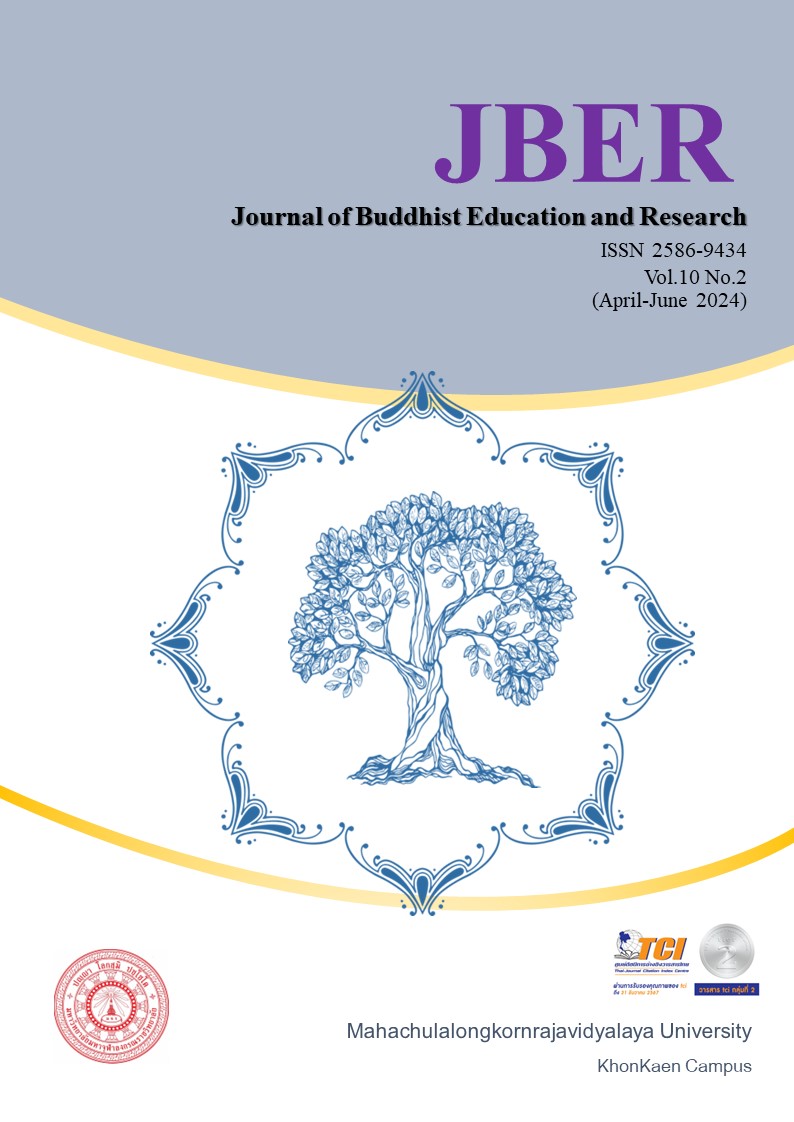A Learning Management Model in Citizenship, Culture, and Social Life to Address the Problem of Alcohol Consumption Among Youth in Khon Kaen Province
Keywords:
Youth alcohol consumption, learning management model, civic education, cultural integration, behavior changeAbstract
This research aimed to develop and implement a culturally relevant learning management model to address alcohol consumption among youth in Khon Kaen province, Thailand. The study was conducted in four phases: identifying factors influencing youth alcohol consumption, developing and validating the S-CLE-NA learning model, piloting the model with a group of 50 target youth, and evaluating the model’s effectiveness, efficiency, and impact through stakeholder feedback. Findings from Phase 1 identified key social, economic, familial, psychological, and accessibility-related factors contributing to youth alcohol consumption. Phase 2 involved the development and expert validation of the S-CLE-NA model, which integrates civic duties, cultural values, and social living skills. In Phase 3, the model was piloted, resulting in significant improvements in knowledge, attitudes, and behavior among participants. Phase 4 involved stakeholder evaluation, revealing positive impacts on youth behavior and community engagement. The study concludes that the S-CLE-NA model is effective in reducing youth alcohol consumption and promoting positive social behavior, and it offers recommendations for expanding and adapting the model in other contexts.
References
Ajzen, I. (1991). The theory of planned behavior. Organizational Behavior and Human Decision Processes, 50(2), 179-211.
Anderson, P., de Bruijn, A., Angus, K., Gordon, R., & Hastings, G. (2009). Impact of alcohol advertising and media exposure on adolescent alcohol use: A systematic review of longitudinal studies. Alcohol and Alcoholism, 44(3), 229-243.
Bandura, A. (1977). Social learning theory. Englewood Cliffs, NJ: Prentice Hall.
Bandura, A. (1977). Social Learning Theory. Prentice Hall.
Botvin, G. J., & Griffin, K. W. (2004). Life skills training: Empirical findings and future directions. The Journal of Primary Prevention, 25(2), 211-232.
Bowen, M. (1978). Family Therapy in Clinical Practice. Jason Aronson.
Bureau of Mental Health. (2023). Family influence on youth alcohol consumption: A regional study in Khon Kaen. Khon Kaen: Ministry of Public Health.
Center for Alcohol Studies. (2021). Alcohol and youth in Thailand: A public health concern. Bangkok: CAS.
Department of Disease Control. (2022). Regulations on alcohol sales and consumption in Thailand. Ministry of Public Health.
Durie, M. (2003). Ngā Kāhui Pou: Launching Māori futures. Wellington: Huia Publishers.
Hawkins, J. D., Catalano, R. F., & Miller, J. Y. (1992). Risk and protective factors for alcohol and other drug problems in adolescence and early adulthood: Implications for substance abuse prevention. Psychological Bulletin, 112(1), 64-105.
Hawkins, J. D., Catalano, R. F., & Miller, J. Y. (1992). Risk and protective factors for alcohol and other drug problems in adolescence and early adulthood: Implications for substance abuse prevention. Psychological Bulletin, 112(1), 64-105.
Hecht, M. L., Marsiglia, F. F., Elek, E., Wagstaff, D. A., Kulis, S., & Dustman, P. (2003). Culturally grounded substance use prevention: An evaluation of the keepin’ it REAL curriculum. Prevention Science, 4(4), 233-248.
Jones, L., Bates, G., Downing, J., Sumnall, H., & Bellis, M. A. (2011). A review of the effectiveness and cost-effectiveness of alcohol education and prevention programs in schools. Health Education Research, 26(5), 852-874.
Jones, S. C., Hall, D. V., & Munro, G. (2001). How effective is the revised regulatory code for alcohol advertising in Australia? Drug and Alcohol Review, 20(1), 293-303.
Kolb, D. A. (1984). Experiential Learning: Experience as the Source of Learning and Development. Prentice-Hall.
Marcoux, B. C., & Shope, J. T. (1997). Application of the theory of planned behavior to adolescent use and misuse of alcohol. Health Education Research, 12(3), 323-331.
Meyers, R. J., Smith, J. E., & Lash, D. N. (2011). The community reinforcement approach. In R. J. Meyers & W. R. Miller (Eds.), The community reinforcement approach: A guide for the family (pp. 1-11). Guilford Press.
Putnam, R. D. (1995). Bowling alone: America's declining social capital. Journal of Democracy, 6(1), 65-78.
Rojjanasrirat, W., & Rice, M. J. (2015). Mindfulness-based interventions in Thailand: Cultural adaptation and outcomes. Asian Journal of Nursing Education and Research, 5(1), 49-55.
Room, R., Babor, T., & Rehm, J. (2010). Alcohol and public health. The Lancet, 365(9458), 519-530.
Rosenstock, I. M. (1974). Historical origins of the health belief model. Health Education Monographs, 2(4), 328-335.
Saffer, H., & Dave, D. (2006). Alcohol advertising and alcohol consumption by adolescents. Health Economics, 15(6), 617-637.
Vygotsky, L. S. (1978). Mind in Society: The Development of Higher Psychological Processes. Harvard University Press.
Windle, M. (1990). A longitudinal study of stress buffering for adolescent problem behaviors. Developmental Psychology, 26(4), 504-513. National Statistical Office. (2023). Youth alcohol consumption statistics in Thailand. Bangkok: NSO Publications.
World Health Organization. (2020). Global status report on alcohol and health. Geneva: WHO.
Downloads
Published
How to Cite
Issue
Section
License

This work is licensed under a Creative Commons Attribution-NonCommercial-NoDerivatives 4.0 International License.




